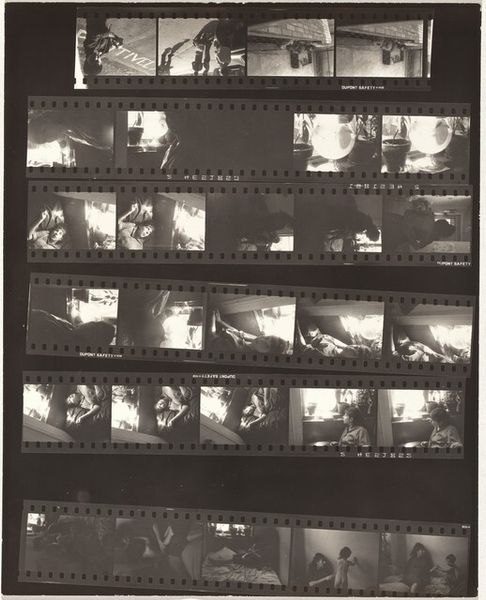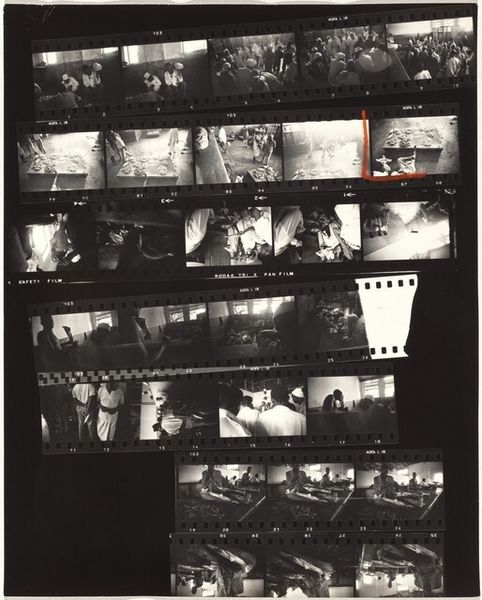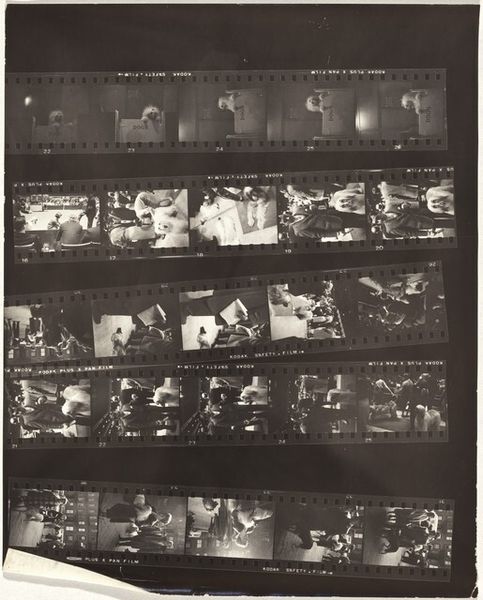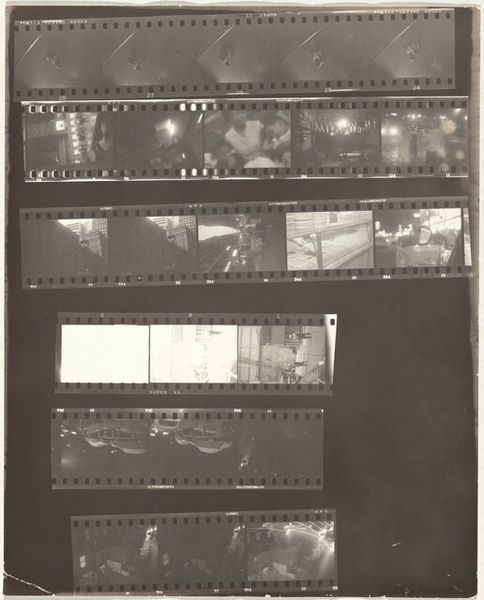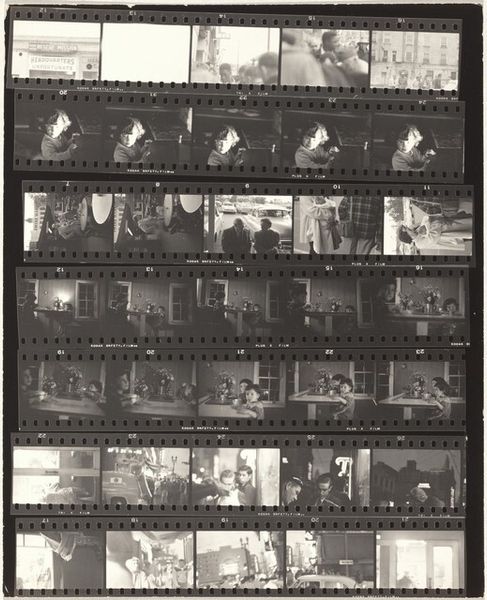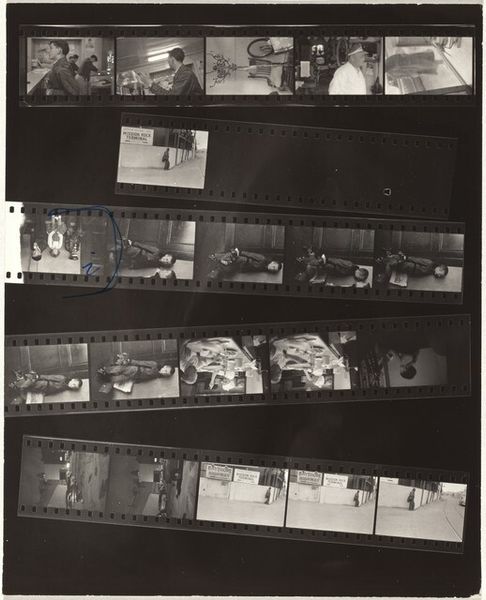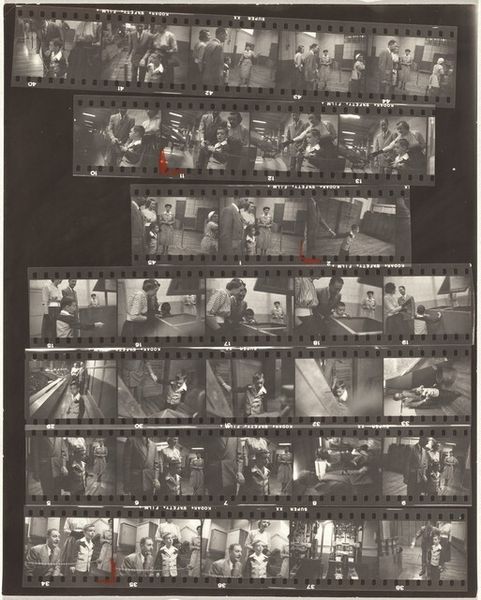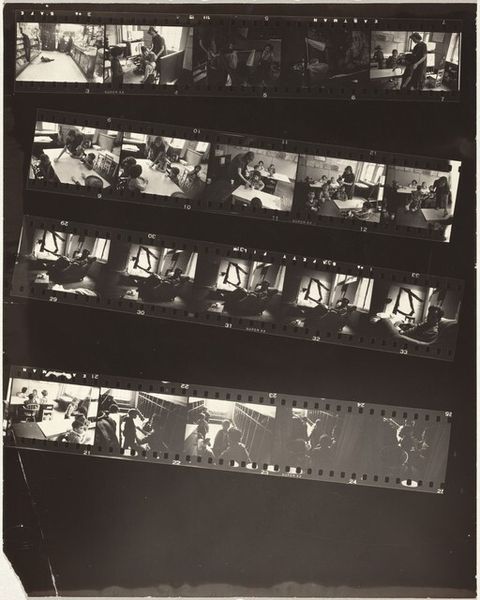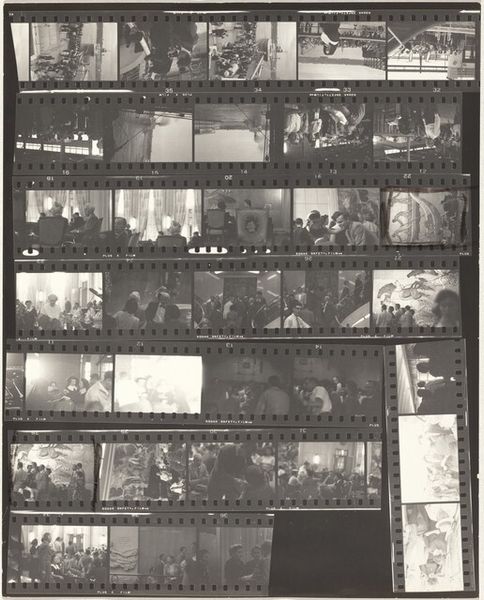
photography, gelatin-silver-print
#
portrait
#
film photography
#
street-photography
#
photography
#
group-portraits
#
gelatin-silver-print
#
modernism
Dimensions: sheet: 25.2 x 20.2 cm (9 15/16 x 7 15/16 in.)
Copyright: National Gallery of Art: CC0 1.0
Curator: Robert Frank's "Mary's birthday--Parties 2," a gelatin silver print from 1956-1958, shows a photographic filmstrip, documenting a birthday party. Editor: It feels voyeuristic, looking at these raw images. Almost like stumbling upon someone’s private memories. What catches your eye about this work? Curator: The presentation itself, the film strip format, is incredibly significant. Frank isn’t just showing us the polished, final photograph. He’s revealing the process, the multiple takes, the imperfections. This disrupts the idea of a singular, objective truth and draws attention to how easily narratives can be manipulated, reframed through photography. Editor: That’s interesting! So the format is almost a political statement about the medium itself? Curator: Precisely. In the context of the 1950s, an era defined by very constructed images of American life, Frank’s raw, almost brutal honesty was radical. He challenges the sanitized narratives promoted by mainstream media, hinting at undercurrents of social tension, alienation, and economic disparity often excluded from the frame. Editor: How do the individual photographs contribute to this bigger picture? Curator: Look closely at the composition within each frame – the stark lighting, the grainy texture, the often awkward or unsettling interactions captured. Are we really seeing joy and celebration, or is there a pervasive sense of unease? Consider what these images might be saying about social roles and expectations in the late fifties. Does it romanticize Mary's birthday? Editor: I hadn’t thought about it that way. Seeing the work as a commentary on constructed realities makes so much sense. Curator: The "snapshot aesthetic" adopted by Frank became very influential and paved the way for many later artists and photographers to express themselves. What can we learn from Mary's party and integrate into the future? Editor: I'm seeing much more than just a birthday party now; I appreciate understanding Frank's message and disruptive techniques. Curator: Yes, it also helps consider the photographer's position within the photo and how that power can construct specific stories or promote skewed images, making you question its position in an evolving cultural narrative.
Comments
No comments
Be the first to comment and join the conversation on the ultimate creative platform.
